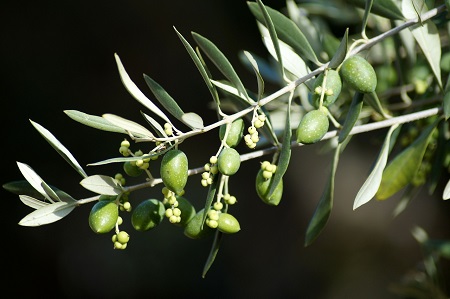
Register with Plumtri!
Register on plumtri as an Individual or as an Organisation to gain access to all of its useful features and remain updated on the latest R&I news, events and funding opportunities.
-
 Welcome to plumtriA platform for Research & Innovation
Welcome to plumtriA platform for Research & Innovation -
 Looking for Funding?Check out the current open calls
Looking for Funding?Check out the current open calls -
 Register today to start receiving our monthly newsletter
Register today to start receiving our monthly newsletter -
 Looking to partner up?Search our list of registered profiles
Looking to partner up?Search our list of registered profiles -
 You have questions on a particular funding programme?
You have questions on a particular funding programme?
Project OPoBiCell - A Study in Bioactive Extraction and Application

The OPoBiCell project, focuses on transforming waste from olive oil production into valuable bioactive compounds with potential health benefits, including anti-cancer properties. This innovative project combines advanced extraction methods, cell culture, and molecular analysis to understand and optimize the health benefits of olive pomace. Below, we explore the project’s methodologies, focusing on extraction with methanol, cell viability testing and protein analysis, liposome encapsulation and high-performance liquid chromatography (HPLC).
Olive Pomace Extraction with Methanol
Methanol extraction is an efficient way to isolate phenolic compounds, antioxidants, and other bioactive molecules from olive pomace (Jakopic et al., 2009). In the OPoBiCell project, methanol was used in order to its effectiveness in breaking down cell walls, allowing the release of phenolics and flavonoids known for their antioxidant and potential anti-cancer effects. This process involves drying and grinding the olive pomace, followed by mixing with methanol, which extracts the bioactive compounds.
After extraction, the methanol mixture undergoes filtration to remove solids, and the methanol is evaporated to yield concentrated extracts. These extracts contain phenolic compounds, which are highly valued for their ability to protect cells from oxidative damage and are the focus of anti-cancer studies in this project.
Cell Culture and Bioactivity Testing
To evaluate the health potential of the extracts, human cancer cells were cultivated, exposing them to different concentrations of extracts. This testing enables scientists to understand how these extracts impact cancer cells, specifically assessing their effects on cell proliferation and viability.
Different types of cancer cell lines were used, including renal adenocarcinoma, breast metastatic, and chronic myeloid leukemic cells. By cultivating these cells in a controlled environment, researchers can carefully analyse how the bioactive compounds affect cell growth and death. Observations at this stage include changes in cell structure, behaviour, and response to bioactive agents, which are critical for determining the anti-cancer properties of the extracts.
Testing Cell Viability with MTT Assay
To measure the bioactive compounds' effects on cancer cell viability, MTT assay is used. The MTT assay is a colorimetric test that indicates cell health by measuring mitochondrial activity. When cells metabolize the MTT reagent, they produce a purple formazan dye, which is quantified to assess cell viability (Meerloo et al., 2011).
In this project, MTT assay was used in order to compare the effects of varying concentrations of bioactive extracts on different cancer cells. If a high concentration of formazan dye is detected, it suggests that the cells are increasing. Conversely, a low concentration indicates that the bioactive compounds are inhibiting cell growth, suggesting potential anti-cancer effects.
Cell Staining and Analysis of Apoptosis
Apoptosis, or programmed cell death, is a mechanism through which the body removes damaged or abnormal cells (Nagorni et al., 2005). To assess whether the bioactive compounds trigger apoptosis in cancer cells, staining methods were used, including Giemsa staining, Hematoxylin and Eosin (H&E) staining and fluorescent staining with Quinacrine dichloride.
- Hematoxylin and Eosin Staining: This technique highlights cell structures, allowing researchers to observe changes in morphology, such as cell shrinkage or membrane blebbing, which are typical signs of apoptosis.
- Quinacrine Dichloride Staining: Quinacrine dichloride is a fluorescent dye that binds to cellular DNA, making it easier to detect apoptotic bodies (fragments of cells) and assess nuclear changes associated with apoptosis.
- Giemsa Staining: Giemsa staining is a widely used technique in cell biology and pathology to differentiate cell types and identify structural details within cells. Giemsa stain is a mixture of methylene blue, eosin, and azure. When applied to cells, it binds to phosphate groups in the DNA, producing distinct colours in different cellular components. Chromosomes, which are rich in DNA, appear in a dark purple or blue color, while other cellular structures can vary in colour depending on the amount of DNA or RNA present.
Through these staining methods, researchers can visualize structural changes in cells exposed to bioactive extracts, helping determine whether these compounds induce apoptosis in cancer cells.
Bax and Bcl-2 Protein Assays
- Bax (Bcl-2-associated X protein) and Bcl-2 (B-cell lymphoma 2) are key regulators in the apoptosis pathway (Adams et al., 1998). Bax promotes apoptosis by disrupting the mitochondrial membrane, leading to cell death, while Bcl-2 works as an anti-apoptotic protein, stabilizing mitochondria to prevent cell death.
- In the OPoBiCell project, the balance between Bax and Bcl-2 expression in treated cancer cells was studied. Higher Bax levels relative to Bcl-2 indicate an apoptotic response, suggesting that bioactive extracts from olive pomace might trigger programmed cell death in cancer cells, which is desirable in cancer treatment.
Gel Electrophoresis
- Gel electrophoresis was used to separate proteins like Bax and Bcl-2 based on their molecular weight (Antonsson et al., 2001). In this technique, proteins are placed in a gel matrix and subjected to an electric field, which causes them to move at different rates depending on their size and charge. Smaller proteins migrate faster through the gel, allowing researchers to identify and analyse specific proteins of interest.
- In the context of OPoBiCell, gel electrophoresis helped to visualize and confirm the presence of Bax and Bcl-2 in cell samples treated with bioactive extracts. The separated proteins were often visualized through staining or transferred to a membrane for further analysis, such as Western blotting, to assess relative protein levels accurately.
Apoptosis and Cell Death Pathway Analysis
- To further understand how the extracts influenced cancer cell survival, the project also analyzed caspase-3 activity, a downstream effector in the apoptosis pathway activated by Bax. When caspase-3 is activated, it leads to the systematic dismantling of cellular components, ultimately causing cell death.
- By measuring caspase-3 activity alongside Bax and Bcl-2 levels, researchers could gain a more comprehensive view of the apoptotic processes triggered by olive pomace extracts.
High-Performance Liquid Chromatography (HPLC) for Compound Identification
High-performance liquid chromatography (HPLC) is a key analytical method used in this project to separate, identify, and quantify the individual compounds within the methanol extract (Loescher et al., 2014). This technique involves passing the extract mixture through a column with a solid absorbent material. As the sample flows through, different compounds are retained for varying lengths of time, which allows researchers to identify them individually based on their unique retention times.
Through HPLC, some specific phenolic compounds like hydroxytyrosol, oleacein, and others, which are known for their antioxidant and anti-cancer properties were obtained (Lia et al., 2024). HPLC not only reveals the phenolic profile of the olive pomace but also quantifies each compound, providing essential data on the extract’s potential effectiveness in therapeutic applications.
Encapsulation in Liposomes
One major challenge with bioactive compounds is ensuring that they reach their target cells within the human body without degrading. To improve delivery, liposome encapsulation was employed, where bioactive compounds are packaged in tiny lipid-based vesicles, similar to cell membranes. These liposomes help protect the bioactive compounds from degradation, enhancing their stability and absorption within the body (Farhang, 2013).
Two different methods were used to produce these liposomes: thin-film hydration and high-pressure homogenization. The thin-film hydration method involves dissolving the compounds and phospholipids in methanol and slowly evaporating the solvent to form a thin film. High-pressure homogenization, on the other hand, subjects the compounds to intense pressure, producing smaller liposomes that improve absorption. Both methods allow researchers to test the encapsulated compounds on cancer cells, comparing their bioactivity to non-encapsulated versions.
Key Outcomes of the OPoBiCell Project
The OPoBiCell project achieved several significant outcomes:
- Optimized Extraction Methods: Methanol extraction is an effective method for isolating phenolic compounds from olive pomace. This approach retained high concentrations of antioxidant and bioactive molecules, which showed promising results in preliminary anti-cancer testing.
- Identification of Potent Bioactives: Using HPLC, the identification and quantification of each individual compound was discovered, with known health benefits, such as hydroxytyrosol. These compounds have potential applications in health and wellness products, especially those targeting cancer prevention and treatment.
- Enhanced Bioavailability through Encapsulation: Liposome encapsulation improved the stability and bioavailability of the extracted compounds, which could enhance their therapeutic potential. Encapsulated compounds were better protected from degradation, making them more effective when tested on cancer cells.
- Promising Anti-Cancer Activity: Cell viability testing and staining techniques revealed that the bioactive compounds from olive pomace could inhibit the growth of certain cancer cells. By promoting apoptosis in these cells, the compounds may serve as effective, natural anti-cancer agents, opening the door to further studies on their applications in cancer therapy.
- Significance in Cancer Research: Analysing the expression levels of Bax, Bcl-2, and caspase-3 provides insights into whether bioactive compounds from olive pomace can selectively induce apoptosis in cancer cells. The balance between pro-apoptotic and anti-apoptotic proteins is a critical marker for evaluating the potential therapeutic effects of these compounds. In OPoBiCell, such protein assays helped validate the anti-cancer potential of olive pomace extracts, supporting further exploration of these compounds in cancer treatment research.
Conclusion
The OPoBiCell project highlights how waste from olive oil production can be transformed into a valuable resource for health and cancer research. Encapsulation and testing against cancer cells has provided essential insights into the therapeutic potential of olive pomace. By refining extraction methods, enhancing bioavailability, and confirming anti-cancer effects, this project has laid a strong foundation for future applications of olive pomace extracts in health and wellness.
Funding
OPoBicell was funded by Xjenza Malta and the Scientific Technological Research Council of Turkey (TUBITAK) through the MCST-TUBITAK 2021 Joint Call for R&I projects.
References
- JAKOPIČ, J., VEBERIČ, R. and ŠTAMPAR, F. 2009, ‘Extraction of phenolic compounds from green walnut fruits in different solvents’, Plant Production, 93(1).
- Meerloo, J.V., Kaspers, G. and Cloos, J. 2004. ‘Cell sensitivity assays: the MTT assay.’, Methods in molecular biology.
- Nagorni, A., Bjelakovic, G., Bjelakovic, M., Stamenkovic, I., Arsic, R. and Vuka, K. 2005, ‘APOPTOSIS: PROGRAMMED CELL DEATH AND ITS CLINICAL IMPLICATIONS’, Medicine and Biology, 12(1).
- Adams, J.M. and Cory, S. 1998. ‘The Bcl-2 protein family: arbiters of cell survival.’, Science, 281, 5381.
- Antonsson, B., Montessuit, S., Sanchez, B. and Martinou, J.C. 2001. ‘ax Is Present as a High Molecular Weight Oligomer/Complex in the Mitochondrial Membrane of Apoptotic Cells’, Mechanisms of signal transduction, 276(15), 11615-11623.
- Loescher, C.M., Morton, D.W., Razic, S. and Agatonovic-Kustrin, S. 2014. ‘High performance thin layer chromatography (HPTLC) and high performance liquid chromatography (HPLC) for the qualitative and quantitative analysis of Calendula officinalis—Advantages and limitations’ Journal of Pharmaceutical and Biomedical Analysis, 98, 52-59.
- Lia, F. and Attard, K. 2024. ‘Bioactive Potential of Olive Mill Waste Obtained from Cultivars Grown in the Island of Malta’, Foods, 13(8), 1152.
- Farhang, B. 2013 ‘Encapsulation of Bioactive Compounds in Liposomes prepared with Milk Fat Globule Membrane-Derived Phospholipids’, Chemistry, Medicine, Materials Science.
Download the orriginal article by clicking on the link below.
Information source: Karen Attard and Dr. Frederick Lia
Attachment: External Link
